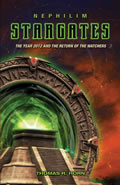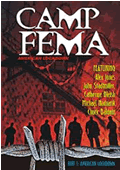PART 16
By Thomas R. Horn
March 2, 2014
NewsWithViews.com
During
the past century, knowledge has increased exponentially, and the Internet
has enabled us to “travel” at the speed of light. We live
in the final days of planet Earth as we know it. Our world is bombarded
with chemtrails and electromagnetic waves. Our foods and animals have
been genetically  altered,
the air poisoned with radiation and heavy metals, and my genes and
yours are held together only by the grace of God.
altered,
the air poisoned with radiation and heavy metals, and my genes and
yours are held together only by the grace of God.
The Human Genome Project, intended to finish in fifteen years, instead announced completion only thirteen years into the work. If you read summaries and reviews of that work now, you’ll find many arguing that the announcement came prematurely—that the entire sequence had not fully been read. Thirteen is a number repeated again and again in occult circles. It is considered the number of rebellion, an unlucky number. Osiris was torn into fourteen pieces: thirteen plus his reproductive “member” (reconstructed by Isis and used to impregnate herself and then give birth to Horus). Do a search in the daily news for the number thirteen, and you will be amazed at how many times it occurs. Could it be that the HGP leaders arbitrarily stopped at thirteen and “rested,” announcing their victory to the world, or is it possible that the number was craftily chosen as a nod to spiritual influences and masters?
The announcement ushered humanity into the post-genomic era and engendered the question: Who owns our genes? According to the final Human Genome Publication (No. 12), published in February 2002, the “First International Conversation on Enviro-Genetics Disputes and Issues,” sponsored by the Einstein Institute for Health and Science, met in Kona, Hawaii. The meeting took place in July 2001 and was attended by more than eighty judges and forty scientists—all there to discuss the legal and ethical ramifications of the Human Genome Project’s results. These legal and scientific experts joined together from all over the world to dissect the New World Order of the post-genome era. Shortly thereafter, attendee Justice Artemio V. Panganiban of the Philippines presented a paper with the assigned topic, “Paradigm Shifts in Law and Legal Philosophy,” in which he recounted some of the opinions expressed during the Kona conference.
Justice Panganiban’s comments succinctly summarize those of many globalists:
I believe that the major transformational shifts in the world have been brought about mainly by the informational and technological revolution unfolding even now as I speak. I refer to computerization, minuterization [sic], digitization, satellite communications, fiber optics and the Internet—all of which, taken together, tend to integrate knowledge on a worldwide scale. This international integration of knowledge, technologies and systems is referred to as globalization.
Amazingly, Panganiban has here distilled this section so far in that knowledge, travel, and commerce have increased exponentially since the turn of the twentieth century. He goes on:
Professor Anne-Marie Slaughter of Harvard Law School, says that modern judges should “see one another not only as servants or even representatives of a particular government or party, but as fellow professionals in a profession that transcends national borders”… Justice Claire L’Heureux-Dube of the Supreme Court of Canada—in a speech before the “First International Conversation on Enviro-Genetics Disputes and Issues” sponsored by the Einstein Institute for Science, Health and the Courts (EINSHAC) and held in Kona, Hawaii on July 1, 2001—opined that it is “no longer appropriate to speak of the impact or influence of certain courts on other countries but rather of the place of all courts in the global dialogue on human rights and other common legal questions.”
The
immediate impact of statements like these is that the legal representatives
that you and I elect, or those appointed by such elected  representatives,
appear to owe their allegiance not to the electors but rather to “each
other” and to the globe at large—to the “New World
Order.” So while you and I may still wish to believe that the
act of writing to one’s congressman precipitates action in Washington,
the sad but obvious truth is that globalism rules our world, condemning
our meager participation to the scrap heap of idealism and Judeo-Christian
ethics.
representatives,
appear to owe their allegiance not to the electors but rather to “each
other” and to the globe at large—to the “New World
Order.” So while you and I may still wish to believe that the
act of writing to one’s congressman precipitates action in Washington,
the sad but obvious truth is that globalism rules our world, condemning
our meager participation to the scrap heap of idealism and Judeo-Christian
ethics.
The Human Genome Publication No. 12 referenced above has much to say about the global impact of the HGP. At the Kona meeting, National Institutes of Environmental Health and Sciences Director Kenneth Olden “observed that the Human Genome Project’s output presents a major societal challenge to use the new information and technologies to improve the quality of human existence. The scope of this challenge, he said, is expanded further when the question is asked about who will benefit most from these advances and who will bear the greater share of the risk” (emphasis added [note how this language echoes the eugenics movement’s goals to improve mankind]; US Department of Energy Office of Biological and Environmental Research, “Countering Bioterrorism: DOE-Funded DNA-Based Technologies Track Identity, Origin of Biological Agents,” Human Genome News, Vol. 12, Nos. 1–2, February 2002).
The HGP publication continues with this informative paragraph:
Discussions that followed the plenaries were far ranging, generally going beyond the suggested topics of genetically modified (GM) foods and agriculture, bioscience and criminal jurisprudence, biological property, genetic testing, and human subjects in biomedical research. During these sessions, judges related how their nations’ courts have managed science and technology issues and the problems they have encountered. As groups attempted to anticipate issues likely to arise in the next two decades, researchers in their turn offered opinions on the current state of the science as well as some forecasts of advances on the near horizon. (ibid.)
I don’t know about you, but reading language like this makes me feel a bit like a sick patient whose doctor is discussing my healthcare with my family while simultaneously ignoring me. As humans, each one of us carries unique DNA that sets us apart, making us special and one of a kind to God. However, corporations, judiciaries, politicians, and scientists huddle around our hospital beds like vampires in a blood bank, eagerly using us to further a selfish agenda.
And speaking of selfish, let me tell you a bit about an article I recently read called, “The Selfish Gene.” Published in January 2013 at the DailyBeast.com and written by Michael Thomsen, the article bemoans the failures of the Human Genome Project—and Walter Gilbert in particular—to live up to the hype of their original “Promethean” promises. Citing the work of Hillary and Steven Rose, authors of Genes, Cells, and Brains: The Promethean Promises of the New Biology, Thomsen wonders whether the HGP provided consumers anything beyond a better “shampoo”:
For the Roses, the signal image of this movement is Walter Gilbert, one of the lead scientists on the Human Genome Project, standing on stage promising the possibility of fitting the code for human life onto a CD-ROM. This is the model for science in the Petri dish of post-industrial capitalism, reductionist fantasies delivered from a PR platform meant to turn public excitement into investor support. Scientists begin with a fixed conclusion, hyperbolize the benefits of reaching it, and then spend large amounts of private and public money to reach it only to discover their original promises were impossible. The Human Genome Project began not with a question, but an answer that had to be substantiated in reverse.
It’s
clear from this statement that the Roses and Thomsen believe the HGP
was a letdown to corporatism as well as to you and me. Maybe he’s
missed the point. The PR campaign works in that it does sell the American
or global public on an idea, particularly one that requires a serious
infusion of what we naively call “our tax dollars.” These
“selfish” promises haven’t failed; they have  succeeded
beyond measure! The post-genomic era has altered legal decisions,
provided the foundation to define “human,” given science
a road map for gene hacking and synthetic biology, and propelled the
transhumanist agenda to the forefront. Failed? Not on your tintype!
succeeded
beyond measure! The post-genomic era has altered legal decisions,
provided the foundation to define “human,” given science
a road map for gene hacking and synthetic biology, and propelled the
transhumanist agenda to the forefront. Failed? Not on your tintype!
The New World Order, hailed as having arrived by President Bush in 1991, is here, and science has established its paradigm: a drive toward a new human…a better human. It’s like the introduction to the hit 1970s TV program, The Six Million Dollar Man—“Gentlemen, we can rebuild him. We have the technology. We have the capability to build the world’s first bionic man. Steve Austin will be that man. Better than he was before. Better, stronger, faster.” Well, the post-genomic, proto-transhuman is just that and a bag of chips. And if you drag your feet and refuse to let your children or grandchildren participate in the Golden Age of the Transhuman Being, then you’ll be branded a heretic at best, less sentient and perhaps even not worthy of life at worst.
The Golden Age of Transhumanism is upon us, whether we like it or not. Just look at the films, television programs, and video games set before our children for constant consumption and indoctrination. According to H+ Magazine, the top ten “transhumanist” films are, counting down from ten to one (my comments in brackets):
10. Avatar 3D (2009)
[If you’ve not seen this one, rent the DVD. It is the blueprint for 2025, when transhumanists such as Ray Kurzweil and Natasha Vita-Moore see us transitioning to “avatars” in preparation for full uploading to computers. The plot is simple and “green”: Mankind has conquered space, but corporations are still greedy and continue to strip resources—in this case, from another planet. When his brother is killed, paraplegic Marine Jake Scully takes his place on a mission to Pandora, a world filled with “backward” but natively beautiful creatures. Parker Selfridge is the greedy head of the corporation raiding Pandora, and his goal is to wipe out the “Na’vi” (the natives). The plot exploits the young by indoctrinating them with the “green agenda” while planting desires to be “free” to live an eternal, perfect life in a beautiful garden inside a virtual world.]…
9. Gattaca (1997)
[A film about hacking the human genome to build better people. The title is taken from the building blocks of DNA: A for adenine, G for guanine, C for cytosine, and T for thymine.]…
8. The Terminator (1984)
[James Cameron directed this as well as Avatar. Arnold Schwarzenegger is a sentient machine from the future. Oddly enough, this film presents the possible consequences of what Hugo de Garis calls the coming “Artilect War,” in which sentient machines rise up against humanity (both transhuman and human) in a battle for control of the planet.]…
7. The Matrix (1999)
Probably only a few thousand people in the world have ever read, or even heard of, Nick Bostrom’s confounding Simulation Argument. But tens of millions of people have watched this movie and thus have learned something about the concept. Which pill would you take? [This statement is from the H+ article and contains the impressions of the writer. Bostrom’s Simulation Argument posits that we are living within a living computer. Here is the abstract from this paper: “This paper argues that at least one of the following propositions is true: (1) the human species is very likely to go extinct before reaching a ‘posthuman’ stage; (2) any posthuman civilization is extremely unlikely to run a significant number of simulations of their evolutionary history (or variations thereof); (3) we are almost certainly living in a computer simulation. It follows that the belief that there is a significant chance that we will one day become posthumans who run ancestor-simulations is false, unless we are currently living in a simulation. A number of other consequences of this result are also discussed” (Nick Bostrom, “Are You Living in a Computer Simulation?”) Philosophical Quarterly, 2003, Vol. 53, No. 211, 243–255.]
6. WALL-E (2008)
[This film teaches children and adults alike that robots feel, love, and even “mate.” Wall-E is a garbage robot whose solitary job is to clean up the mess on Earth left behind by the humans (who now live off-world). “Eve,” a sleek female robot, is sent by the out-of-condition humans (one might say “devolved”) to see if Earth can once again sustain life.]…
5. Dr. Jekyll & Mr. Hyde (1931)
Among the movies I’ve listed here, this is the one that probably the fewest of our readers have seen. That’s a shame, because it is truly a great film and it also addresses important issues for transhumanists to consider. What makes up the human personality? How do we define “good” and “evil” and who gets to choose the accepted definition? [Again, the statement here is from the article’s author at H+, so it’s interesting that he chose this old film, based on a nineteenth-century novel. The Strange Case of Dr. Jekyll and Mr. Hyde was published in 1886 by Robert Louis Stevenson. Many films, a play, and even a musical have been based on this novella. The notion of good and evil is also a biblical one.]
4. Eternal Sunshine of the Spotless Mind (2004)
In my opinion as a cineaste, this is the best movie made, of any genre, thus far in the 21st century. And it’s also an essential film for those who are interested in the questions of neuroethics. We may not be far away from having technologies that can enable the precise manipulation of memories, and, by extension, of personality. What a treat when a wonderfully entertaining movie also can engage the viewer in a challenging exploration of transhumanist ethics. [The writer’s enthusiasm for this film is telling. The title is taken from a poem by Alexander Pope about a woman whose comfort after losing love is forgetfulness. In the film, Jim Carrey’s character Joel Barrish and his lover, Clementine (Kate Winslet), both choose to have their memories erased by the Lacuna Corporation. The story line follows the disappearing memories as they are erased inside Barrish’s head with the final memory, “Meet me in Montauk.” Many of you are already thinking what I’m about to write: Montauk, New York, is the site of the notorious “Montauk Project,” related to the Philadelphia Experiment.]
3. Brazil (1985)
Total movie magic…and although most of the technology depicted in this film is steampunk, not H+, it should provide a wake-up call for us to be aware that the struggle for political power and social control is ever present, and that if we fail to pay attention, our dreams of techno-transcendence may be snatched away from us just when they seem within our grasp. [What an interesting comment! “Dreams of techno-transcendence”? May the Lord grant that you and I may continue to stand in the way of such “transcendence”!]
2. Metropolis (1927)
…In making Metropolis, the great director Fritz Lang used all the resources of the then world-class UFA studio in Berlin—nearly bankrupting it in the process—and achieved effects that have never been surpassed. See it on the big screen, preferably in the most recent restoration, and be blown away. [This film is in German with subtitles, but the restored copy is indeed beautiful to watch. The story takes place in 2026. Metropolis is modeled upon Babylon, and features apocalyptic themes, including a false prophetess called the “Whore of Babylon,” who incites the workers to their doom. Robotics and human/machine evolution themes abound, as does the theme of class distinction, the wealthy versus the common worker. It’s no wonder that the Germans loved it.]
1. 2001: A Space Odyssey (1968)
You knew we would end up here, didn’t you? Where else but with a movie that not only is central to the concerns of transhumanists, but also is among the top ten or twenty movies ever made, of any kind. First to impress is its amazingly realistic depictions of life in space, whether on the shuttle—that flight attendant who walks upside down!—the space station, or the flight to Jupiter. And no film has ever depicted with such poignancy the troubled relationship between sentient AI and its human masters. Then comes the astonishing climax—the famous Stargate sequence—which I regard as Clarke’s and Kubrick’s attempt to portray, in cinematic terms, the human experience of a technological Singularity. Remember, this is decades before Vinge wrote his seminal essay, though in 1965 I.J. Good had first described the possibility of an “intelligence explosion,” which likely influenced the filmmakers. Someday, perhaps, another even better movie will be made about the dreams/nightmares of transhumanists, but for now, this one is the pinnacle. [The writer effervesces over this one, but he has reason to do so. The movie 2001: A Space Odyssey uses psychedelics and German music—“Also Sprach Zarathustra”—to paint a picture of mankind’s directed evolution via panspermia, taking us from the deliberate intervention during the days of Neanderthal to a team of scientists in a spaceship and beyond. Nietzsche’s coming Übermensch or Superman is revealed at the end—savior of all mankind in the transformed “starchild.”] (Mike Treder, “Top Ten Transhumanist Movies,” H + Magazine, November 8, 2010)
Honestly, how many of the above films have you seen? If you’re not naturally a science-fiction fan, then it’s likely that you’ve missed one or perhaps even all of them. However, these films represent what transhumanists consider core theology in compact, easy to digest, two- to three-hour lessons.
 Fiction,
and particularly fiction in film, provides immediate access to layers
of the brain that mere nonfiction such as this cannot reach. When
processing fiction, humans naturally “shut off” their
logical tendencies to question a particular viewpoint. Taught the
same viewpoint in the context of a pleasant or intriguing story, the
“lesson” seeds itself into our subconscious and slowly
begins to grow there.
Fiction,
and particularly fiction in film, provides immediate access to layers
of the brain that mere nonfiction such as this cannot reach. When
processing fiction, humans naturally “shut off” their
logical tendencies to question a particular viewpoint. Taught the
same viewpoint in the context of a pleasant or intriguing story, the
“lesson” seeds itself into our subconscious and slowly
begins to grow there.
Television has brought us loads of such “seeded” themes over the years since its invention. Early “space” programs appear silly to us now, but what 1950s child didn’t long to be either Superman or Flash Gordon? However, beginning with a program in 1966, everything changed. Gene Roddenberry spent his youth as a pilot in World War II, but upon returning to civilian life, he had an early glimpse into the brand-new medium called television, and his life and our futures took a dramatic turn. Gifted with the ability to write compelling fiction, Roddenberry moved to Hollywood and began churning out scripts for early favorites like Have Gun Will Travel, Highway Patrol, The Kaiser Aluminum Hour, The Naked City, and Dr. Kildare.
| Subscribe to NewsWithViews Daily E-Mail Alerts! |
In 1964, Roddenberry decided to write a speculative script for a new science-fiction drama that he described as “Wagon Train in Space.” The program was called Star Trek, and Roddenberry struck a deal with NBC to air the show beginning with the fall lineup in 1966. Despite climbing ratings, NBC canceled the show after eighty episodes (about three and a half seasons). Fan loyalty proved everlasting, however, and soon Star Trek conventions revived interest in the Enterprise crew, so much so that Paramount Studios signed Robert Wise to direct the original cast in Star Trek: The Motion Picture, which premiered in December 1979—and the rest, so they say, is history.
But is it? There is a secret history to the Roddenberry story that you may not know, one that we will pick up in the next entry concerning a nebulous but highly influential group called “The Nine.”
Audience applauds as Regina E. Dugan -- former Director of DARPA and current executive at Google -- describes with excitement the coming BEAST TECH smart tattoos and ingestible biochips that are ALREADY FDA APPROVED and that people will want to receive (and then be REQUIRED to receive) by 2017. She glows about the "super powers" the PROTEUS MARK (Proteus was a Shape-Shifter in Greek Mythology) will give her and says today's generation are going to want them too. Unfortunately, she is right.
IBM ALSO CELEBRATING THE MARK OF THE BEAST IMBEDDED BUYING SYSTEM OF TOMORROW
In the next entry: : The 2017 Plan to BORG Humanity
WATCH THE BEAST TECH TRAILER BELOW
Click here for part -----> 1, 2, 3, 4, 5, 6, 7, 8, 9, 10, 11, 12, 13, 14, 15, 16, 17,
© 2014 Thomas Horn - All Rights Reserved
Thomas Horn is the CEO of RaidersNewsUpdate.com and SurvivorMall.com.
Over the last decade, he has authored three books, wrote dozens of published editorials, and had several feature magazine articles. In addition to past articles at NewsWithViews.com , his works have been referred to by writers of the LA Times Syndicate, MSNBC, Christianity Today, Coast to Coast, World Net Daily, White House Correspondents and dozens of newsmagazines and press agencies around the globe. Tom's latest book is "The Ahriman Gate," which fictionalizes the use of biotechnology to resurrect Biblical Nephilim.
Thomas is also a well known radio personality who has guest-hosted and appeared on dozens of radio and television shows over the last 30 years, including "The 700 Club" and "Coast to Coast AM." When looking for a spokesperson to promote their film "Deceived" staring Louis Gossett Jr. and Judd Nelson, "Cloud 10 Pictures" selected Thomas as their spokesperson to explain the Christian viewpoint on UFO-related demonology.
Web Site: RaidersNewsUpdate.com
E-Mail: RaidersNewsUpdate@gmail.com





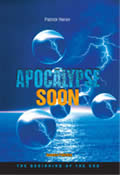

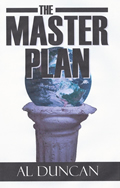


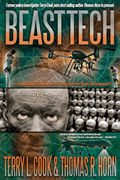



 Share This Article
Share This Article